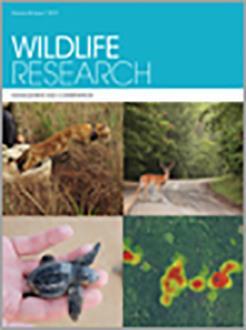Context. Physiological stress has the potential to influence animal population persistence. The endangered Asian elephant (Elephas maximus) is involved in intense conflict with humans in many parts of its range, which likely leads to stress for individuals and groups, with consequences for population survival. Thus, it is important to understand how the elephants’ stress levels are influenced by socio-ecological factors when not directly exposed to human-induced threats, and to use this understanding to improve conservation and management strategies.
Aims. The present study was designed to provide baseline information on the link between socio-ecological factors and stress levels of undisturbed populations of elephants. The main aim was to determine the influence of a number of factors – herd size, season, number of calves and adult females present in a herd and their lactational status and body condition – on the adrenocortical activity of free-ranging adult female Asian elephants living in protected forests (without any direct exposure to human-induced threats), by measuring their faecal glucocorticoid metabolite (fGCM) levels.
Methods. A total of 145 fresh faecal samples were collected from 123 identified adult female elephants inhabiting Bandipur and Nagarahole National Parks of southern India, between the years 2013 and 2015. fGCM levels were measured by employing a group-specific standardised 11-oxoetiocholanolone enzyme immunoassay (EIA). A generalised linear mixed-effects model (GLMM) was used to assess the influence of socio-ecological factors on fGCM levels of adult female elephants.
Key results. When fGCM levels were analysed with a GLMM, the following patterns were observed: fGCM levels were negatively correlated with the number of adult females (herd size) and positively correlated with the number of calves in a herd and active lactational status of an adult female. fGCM levels of adult female elephants were higher during the dry season (February to May) than wet season (August to December) and negatively correlated with body condition scores.
Conclusions. Adrenocortical activity of female elephants is significantly influenced by the number of calves and adult females present in the herd, seasonality and lactational status.
Implications. It is important to consider the influence of multiple ecological and social correlates when assessing and interpreting the adrenocortical activity of Asian elephants. Our findings highlight the importance of maintaining the social structure of elephants in the wild to avoid detrimental effects on their physiological health. Insights from such assessments could be used to evaluate the stress in elephants that are involved in direct conflicts with humans to take appropriate management decisions for mitigating conflicts.






